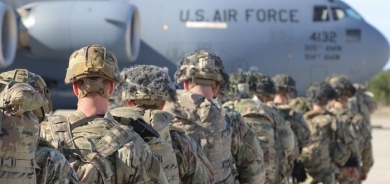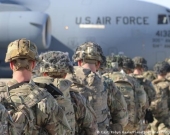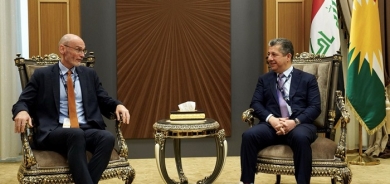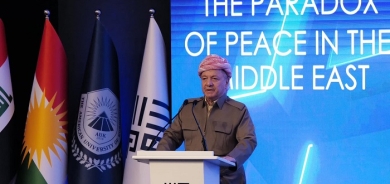Armenian-Kurdish Relations Is A Strategic Necessity
November 18, 2014
From Media

Inadvertent avoidance of the obvious in a country’s external affairs is sheer incompetence. Deliberate evasion of the same is mere stupidity. This equation may well explain Armenia’s nonchalant attitude toward Kurdistan and the Kurds.
The obvious that is being avoided or evaded in Armenia’s external affairs is the fact of the rising empowerment of the Kurdish national movements spreading over eastern Turkey, northern Iraq and northeastern Syria. Armenia and Armenians can only ignore this geopolitical reality at the peril of their national interests.
The Kurds are an ancient people. For lack of a united and national purpose, a definite statehood with ascertained boundaries escaped them throughout their history. Yet they were a substantive presence within empires that ruled them. Their nomadic traditions compelled them to migrate and expand within and outside the boundaries of their suzerain empires. The ruling empires also used and abused them by pitting them against one another and against other minorities – especially against Armenians.
Kurds and Armenians have lived side by side for centuries. Yet, historically Armenians have had a bitter experience with the Kurds. At the behests and briberies of Ottoman rules, various Kurdish clans have maimed, robbed and killed their Armenian neighbors. During the First World War, the Young Turk government engaged many Kurdish tribes in the execution of its genocidal plan to exterminate the Armenian population of the Ottoman Empire.
This bitter experience could have been avoided if the Kurds had entertained a unity of national purpose and discerned the threat posed against them by the Ottoman rulers. By the same token, it could have been avoided if Armenians valued the Kurds and viewed them as common friends and natural allies against the Ottoman autocracy.
They both failed. They both suffered.
Both Armenians and Kurds missed many opportunities to work together in protecting their collective interests against the Ottoman chicaneries. However, they sometimes did cooperate.
Neighborly contacts between Armenians and Kurds started developing as of the 15th century in the Ottoman Empire. Armenians were situated in their ancestral lands of Western Armenia; the Kurds were settled in the eastern parts of the empire. These initial contacts were of crucial importance to both the Kurds and the Armenians. They grew out of the concerns for their physical and administrative existence under the Ottomans.
As this relationship grew, it led to the first official alliance between the Armenians, the Kurds and other minor Muslim tribes of Western Armenia, the Caucasus and eastern Turkey. This pact of alliance was formed in 1459 and included Armenian kings and princes, Kurdish tribal heads, and Muslim chieftains. (Garo Sassouni, the governor of Shirak province during the first independent Republic of Armenia and one of the major organizers of the 1921 uprising against the Soviet dictatorship in Armenia, renders an excellent historical analysis of Kurdish-Armenian relations from 15th century to the 1930’s in his series of articles published in Hairenik monthly from 1929 to 1931. In 1969, these articles were published in a book, titled “The Kurdish National Movements and the Armenian-Kurdish Relations”.)
In 1845, the Kurdish Prince Badrkhan forged an alliance with Armenians to lead an armed uprising against the Ottoman government. For this uprising, both Kurds and Armenians were able to mobilize an army of 40,000 men.
Even during the Armenian revolutionary movement, the Armenian Revolutionary Federation-Dashnaktsuniun (ARF) made efforts to join forces with the Kurds against the Ottoman rulers. Sometimes these efforts succeeded.
Although they faced the same common enemy, unfortunately such alliances were the exception and not the rule in the Armeno-Kurdish relations.
Despite their bitter historic experience, in 1920’s a new era began for Kurdish-Armenian cooperation. After the depopulation of Western Armenia resulting from the Armenian Genocide, the Kurds in Eastern Turkey faced the cruel fact of becoming the next victim of Turkish atrocities. The Republic of Turkey violated their human rights, persecuted them, burned down their villages and hanged their leaders.
Thus, for Kurds their very own collective survival was at stake; for Armenians the liberation of their homeland was at issue. At this point in history, they both realized that they have a permanent common enemy – Turkey.
To carry out a national uprising against the Turkish central government, in 1927 the Kurds founded the Khoybun organization. Armenians participated in this effort. The ARF was instrumental in the inception of Khoybun and its activities. As of 1925, the ARF was promoting the Kurdish national movement in Europe and advocating the Kurdish cause at the Socialist International. The cooperation with Khoyboun succeeded in establishing the short-lived Republic of Ararat on October 28, 1927.
After decades of persecution and suffering, today more than 30 million Kurds are an important political and military presence in the Middle East. They have a vibrant Diaspora in Europe and North America. They are educated and sophisticated. They aspire for a united Kurdistan. The achievement of this aspiration is now a matter of time.
Not only the histories of Kurds and Armenians are intermingled; but also their fate. They are identical in their struggle, in their national aspirations and in their destiny. For Armenians, it is more so, because during the past six centuries the Kurds have influenced the Armenian way of life, often times they have threatened the Armenian existence.
Today, they are both shaping their future. In the past they tried to shape the future separately and paid dearly. Now, as in 1920’s, there is the opportunity to shape the future together. They are destined to live together. Why not shape the future together? Armenia and Kurdistan together can become a regional force to be reckoned with.
There are differences and obstacles in terms of territorial aspirations. But these have been overcome in the 1920’s by the guidelines set in the Treaty of Sevres. They can be overcome again on the same guidelines.
Similarities are stronger. And the strongest among them is the commonality of the enemy. Kurds and Armenians both believe in the wise Kurdish adage: “Bakhdeh romeh tunin eh” – You cannot trust the Turk.
Asbarez











